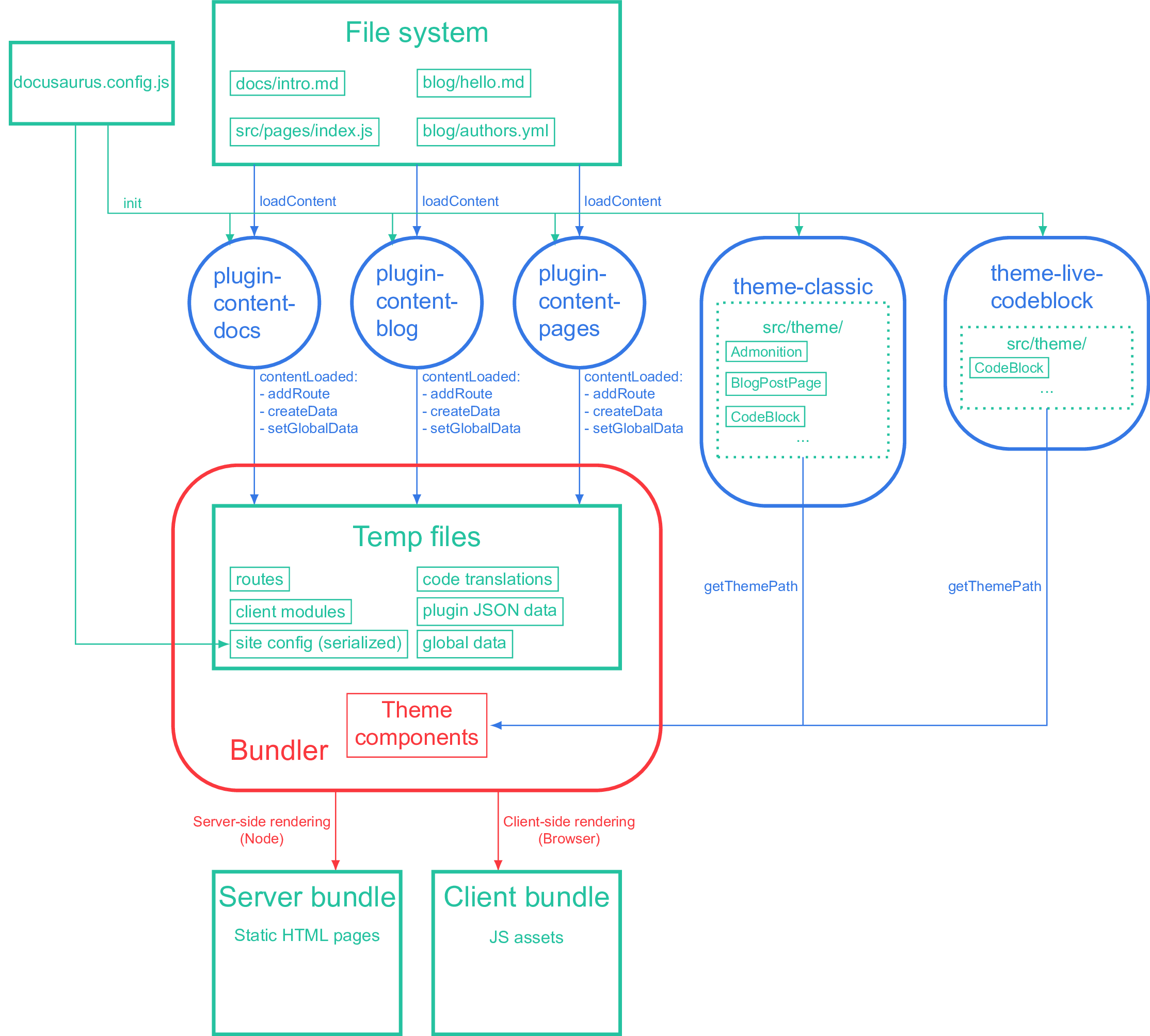架构
¥Architecture

此图显示了 Docusaurus 如何构建你的应用。每个插件都会收集其内容并触发 JSON 数据;主题提供布局组件,其接收 JSON 数据作为路由模块。打包器打包所有组件并触发服务器打包包和客户端打包包。
¥This diagram shows how Docusaurus works to build your app. Plugins each collect their content and emit JSON data; themes provide layout components which receive the JSON data as route modules. The bundler bundles all the components and emits a server bundle and a client bundle.
尽管你(插件作者或网站创建者)一直在编写 JavaScript,但请记住 JS 实际上运行在不同的环境中:
¥Although you (either plugin authors or site creators) are writing JavaScript all the time, bear in mind that the JS is actually run in different environments:
-
所有插件生命周期方法都在 Node 中运行。因此,在我们的代码库支持 ES 模块之前,插件源代码必须作为可导入的 ES 模块或可
require的 CommonJS 提供。¥All plugin lifecycle methods are run in Node. Therefore, until we support ES Modules in our codebase, plugin source code must be provided as ES modules that can be imported, or CommonJS that can be
require'd. -
主题代码是使用 Webpack 构建的。它们可以作为 ESM 提供 - 遵循 React 约定。
¥The theme code is built with Webpack. They can be provided as ESM—following React conventions.
插件代码和主题代码永远不会直接相互导入:它们仅通过协议进行通信(在我们的例子中,通过 JSON 临时文件和对 addRoute 的调用)。一个有用的心理模型是想象插件不是用 JavaScript 编写的,而是用另一种语言(如 Rust)编写的。用户与插件交互的唯一方法是通过 docusaurus.config.js,它本身在 Node 中运行(因此你可以使用 require 并将回调作为插件选项传递)。
¥Plugin code and theme code never directly import each other: they only communicate through protocols (in our case, through JSON temp files and calls to addRoute). A useful mental model is to imagine that the plugins are not written in JavaScript, but in another language like Rust. The only way to interact with plugins for the user is through docusaurus.config.js, which itself is run in Node (hence you can use require and pass callbacks as plugin options).
在打包期间,配置文件本身被序列化和打包,允许主题访问配置选项,如 themeConfig 或 baseUrl 到 useDocusaurusContext()。但是,siteConfig 对象仅包含可序列化的值(在 JSON.stringify() 之后保留的值)。函数、正则表达式等将在客户端丢失。themeConfig 被设计为完全可串行化。
¥During bundling, the config file itself is serialized and bundled, allowing the theme to access config options like themeConfig or baseUrl through useDocusaurusContext(). However, the siteConfig object only contains serializable values (values that are preserved after JSON.stringify()). Functions, regexes, etc. would be lost on the client side. The themeConfig is designed to be entirely serializable.